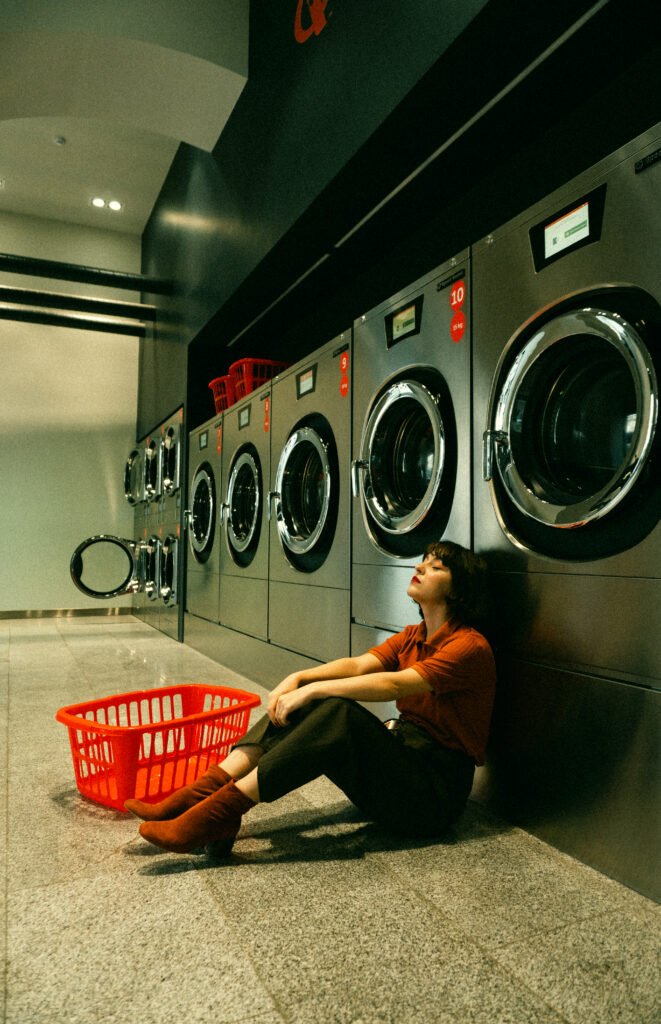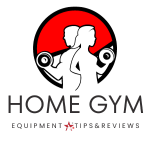Rowing machines have emerged as a popular choice for those seeking a full-body workout. With their ability to engage multiple muscle groups simultaneously, these machines provide an efficient and effective means of cardiovascular exercise. In this article, we will explore the benefits of rowing machines, their versatility as an alternative cardio option, and delve into the various aspects of a full-body workout that can be achieved through their use. So, whether you are a fitness enthusiast looking to switch up your routine or a beginner seeking a comprehensive exercise solution, rowing machines might just be the perfect addition to your fitness regimen.

Cardio Equipment
Types of cardio equipment
When it comes to cardio workouts, there is a wide range of equipment available to choose from. Some of the most commonly used cardio machines include treadmills, stationary bikes, elliptical trainers, stair climbers, and rowing machines. Each type of equipment offers a unique way to get your heart rate up and burn calories. It’s important to understand the different types of cardio equipment and their specific benefits in order to make an informed decision about which one is best suited for you.
Benefits of cardio workouts
Engaging in regular cardio workouts offers numerous health benefits. Firstly, cardio exercises help improve cardiovascular health by strengthening the heart and increasing blood circulation. This can reduce the risk of heart disease and other cardiovascular problems. Additionally, regular cardio workouts help burn calories, leading to weight loss or maintenance. Moreover, cardio exercises have been shown to improve mood and reduce stress, as they release endorphins in the brain. Lastly, incorporating cardio workouts into your routine can improve overall endurance and stamina, making everyday tasks easier to perform.
Comparison of different cardio machines
When comparing different types of cardio equipment, it’s important to consider factors such as impact on joints, versatility, calorie-burning potential, and ease of use. Treadmills are a popular choice as they provide a running or walking experience without the need for outdoor terrain. Stationary bikes offer a low-impact workout, making them suitable for individuals with joint issues. Elliptical trainers provide a full-body workout while minimizing stress on the joints. Stair climbers simulate climbing stairs, working the lower body significantly. Lastly, rowing machines offer a full-body workout, engaging upper and lower body muscles simultaneously.
Choosing the right cardio equipment
Choosing the right cardio equipment depends on various factors, including your current fitness level, personal preferences, and any specific health concerns. It’s important to select a machine that you enjoy using, as this will increase your motivation to engage in regular workouts. If you have a specific goal, such as training for a marathon or weight loss, consider the type of cardio equipment that will best support your objective. Additionally, it may be beneficial to consult with a fitness professional or trainer who can assess your needs and recommend the most appropriate cardio equipment for you.
Alternative Cardio Options
Outdoor activities
While cardio machines are a convenient option, there are alternative ways to get your heart pumping and enjoy the benefits of a cardio workout. Engaging in outdoor activities such as running, hiking, cycling, or rollerblading can provide a refreshing change of scenery while still getting your heart rate up. These activities also offer the added benefits of fresh air and exposure to nature, which can further enhance the overall workout experience.
Group classes
Participating in group fitness classes offers a social and motivational aspect to cardio workouts. Whether it’s a high-energy Zumba class or a challenging spin class, group classes provide a supportive environment and the guidance of an instructor. This can be particularly beneficial for individuals who thrive in a group setting and enjoy the accountability and camaraderie that comes from exercising with others.
High-intensity interval training (HIIT)
HIIT has gained popularity in recent years due to its effectiveness in burning calories and improving cardiovascular fitness in a short amount of time. This type of workout involves alternating periods of high-intensity exercise with short recovery periods. HIIT can be done using a variety of exercises such as running, cycling, or bodyweight exercises, making it a versatile option for those looking to switch up their cardio routine and maximize efficiency.
Cycling
Cycling, whether indoors on a stationary bike or outdoors on a traditional bicycle, is a fantastic cardio exercise that can be tailored to various fitness levels. It offers a low-impact workout that is gentle on the joints while still providing an effective cardiovascular challenge. Cycling can be enjoyed solo or as part of a group, and can be incorporated into daily commuting or recreational activities.
Swimming
Swimming is a low-impact, full-body workout that allows individuals to engage in cardio exercise while minimizing stress on the joints. It offers resistance training for the upper and lower body, as well as cardiovascular benefits. Swimming is particularly beneficial for individuals with joint pain or injuries, as the water provides buoyancy and support, reducing impact and pressure on the body. Additionally, swimming can be a refreshing and enjoyable way to stay active during the summer months.

Rowing Machines for a Full-Body Workout
Overview of rowing machines
Rowing machines, also known as ergometers or ergs, simulate the motion of rowing a boat in water. These machines consist of a seat, footrests, handlebars, and a resistance mechanism. Rowing machines have gained popularity in recent years due to their ability to provide a full-body workout that engages multiple muscle groups simultaneously.
Benefits of using a rowing machine
Using a rowing machine offers numerous benefits for both physical fitness and overall health. Firstly, rowing is a low-impact exercise, making it ideal for individuals with joint problems or those recovering from injuries. Unlike high-impact exercises like running, rowing puts minimal stress on the joints while still providing a challenging cardiovascular workout.
Furthermore, rowing is a highly effective way to burn calories. It engages large muscle groups in both the upper and lower body, resulting in a high calorie expenditure. This makes rowing an excellent choice for individuals looking to lose weight or maintain a healthy weight.
In addition to its calorie-burning potential, rowing also offers strength and endurance benefits. Rowing engages muscles in the legs, core, arms, and back, resulting in improved muscle tone and overall strength. Regular rowing workouts can help increase muscular endurance, allowing you to perform everyday activities with greater ease.
Muscles targeted by rowing
Rowing is a unique exercise in that it targets multiple major muscle groups in the body. The primary muscles worked during rowing include the quadriceps, hamstrings, glutes, calves, core muscles, biceps, triceps, upper back, and shoulders. This comprehensive engagement of muscles makes rowing an effective way to build strength and tone the entire body.
Rowing machine variations
There are different types of rowing machines available, each with its own unique features. The most common variations include air resistance, water resistance, magnetic resistance, and hydraulic resistance. Air resistance rowing machines simulate the feeling of rowing through the resistance created by a flywheel. Water resistance rowing machines use water-filled tanks to provide a smooth and realistic rowing experience. Magnetic resistance rowing machines use magnets to create resistance, allowing for adjustable intensity. Hydraulic resistance rowing machines use hydraulic cylinders to generate resistance and are typically more compact and budget-friendly.
Proper rowing technique
To maximize the efficiency and effectiveness of your rowing workout, it’s important to use proper technique. Start by sitting on the seat with your feet securely strapped into the footrests. Grab the handlebar with an overhand grip, keeping your wrists straight and elbows relaxed. Push with your legs, engaging your glutes, hamstrings, and quads, and lean back slightly, engaging your core. Finally, pull the handlebar towards your torso, engaging your back, shoulders, and arms. Remember to maintain a smooth and controlled motion throughout the entire rowing stroke.
Rowing machine features to consider
When choosing a rowing machine, there are several features to consider. Resistance type is a crucial factor, as it determines the feel and intensity of the workout. Consider the size and space requirements of the machine, as well as the ease of storage if space is limited. Additional features to consider include the monitor display, which provides data on distance, time, speed, and calories burned, and the comfort of the seat and handlebar grips.
Monitoring your workouts
Many rowing machines come equipped with built-in monitors that allow you to track your progress and monitor your workouts. These monitors provide valuable data such as distance rowed, time, stroke rate, and calories burned. Monitoring your workouts can help you set goals, track improvements over time, and stay motivated to continue rowing regularly.
Safety precautions and common mistakes
While rowing is generally a safe exercise, it’s important to take some precautions to prevent injuries. Ensure that the footrests are properly secured and that your feet are securely strapped in before starting your workout. It’s also crucial to maintain proper posture throughout the rowing motion, avoiding excessive leaning forward or backward. Additionally, always start with a warm-up and cool-down to prepare your muscles and prevent muscle strain.
One common mistake people make when rowing is using their arms too much, neglecting the proper leg-drive. Remember that rowing is primarily a leg workout, where the power should come from pushing with your legs and utilizing your glutes and thighs. Another common mistake is rowing too quickly or with poor form, sacrificing proper technique for speed. Slow and controlled strokes with proper form are key to a safe and effective rowing workout.
Incorporating rowing into your fitness routine
To incorporate rowing into your fitness routine, aim for at least two to three rowing workouts per week, alternating with other forms of cardio and strength training. Start with shorter workouts of around 20 to 30 minutes and gradually increase the duration and intensity as your fitness level improves. You can also vary your rowing workouts by incorporating interval training, where you alternate between high-intensity and low-intensity intervals, or by setting specific distance or time goals.
Choosing the right rowing machine
When choosing a rowing machine, it’s important to consider your budget, available space, and specific preferences. If space is limited, consider a compact model or a machine that can be easily folded and stored away. Take into account the size and weight capacity of the machine, ensuring that it can accommodate your needs. Additionally, read reviews and compare different models to find one that offers durability and a smooth rowing motion.
In conclusion, rowing machines are a versatile piece of cardio equipment that offers a full-body workout. With their low-impact nature and ability to engage multiple muscle groups, rowing machines provide numerous benefits for physical fitness and overall health. Whether you choose to row as your primary form of cardio exercise or as a complement to other workouts, incorporating rowing into your fitness routine can help you achieve your goals and improve your overall well-being.


